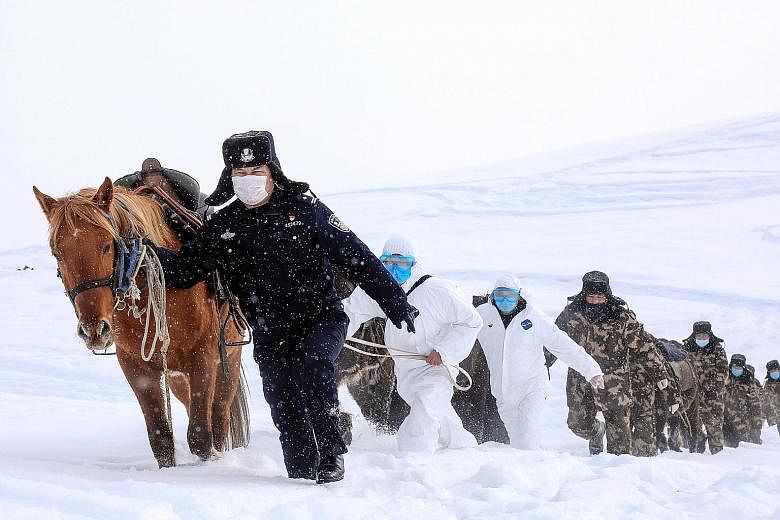New coronavirus infections in China fell yesterday after the health authorities changed the way new cases are counted, the second time they had done so in a month.
Patients will now require laboratory testing before their infections can be confirmed, a reversal of the earlier decision to tabulate cases based on clinical diagnosis.
With this new guideline, there were 394 cases nationwide on Wednesday - down from nearly 1,700 the day before - bringing the total number of cases to 74,576, the National Health Commission (NHC) announced.
Hubei province, the epicentre of the outbreak, reported 628 new cases on Wednesday.
Health officials said the number was adjusted downwards to 349 after over 200 laboratory tests for the cases came back negative.
There were 114 fatalities, bringing the national death toll to 2,118.
The revision of diagnostic guidelines is the second within a month.
Under the first revision, introduced early this month but coming into effect only on Wednesday last week, infection numbers spiked dramatically in Hubei province.
The criteria for confirmed cases were expanded to include people with symptoms who also had either travel history or contact with confirmed cases, or CT scans showing lung lesions.
A day later, however, the NHC removed 108 deaths from its total number due to "double-counting" in Hubei, raising doubts over the reliability of China's data on coronavirus infections.
The new guidelines, while in line with World Health Organisation standards, could also mean the pressure is back on laboratories, with doctors previously complaining of a shortage of test kits.
The change, which was announced in a 15-page document posted on the NHC's website, was because of an "improvement" in the situation in Hubei, with more laboratories available to conduct confirmation tests, health officials said at a briefing yesterday.
The communique also warned of the disease spreading through the air in badly ventilated areas, and emphasised the use of traditional Chinese medicine (TCM) in treatment, even including two recipes for tonics. TCM is one of the industries China has been pushing to expand under the Belt and Road Initiative.
Communicable diseases expert David Heymann of the London School of Hygiene and Tropical Medicine said the reversal on how cases are tabulated will offer a more accurate picture of the numbers infected.
He said confirming infections through clinical diagnosis resulted in many cases, "but also brought in other cases of pneumonia patients who didn't have the virus".
Professor Gregory Gray, an infectious diseases specialist at the Duke-NUS Medical School in Singapore, said it is common that public health definitions of cases change over time as doctors gain a better understanding of the disease and diagnostic tests improve.
Meanwhile, the number of confirmed cases around the world has risen to 75,700, and the death toll stands at 2,130.
Two Iranian citizens who tested positive for the coronavirus have died, a Health Ministry official told the state-run Islamic Republic News Agency.
They are the country's first fatalities from the outbreak.



